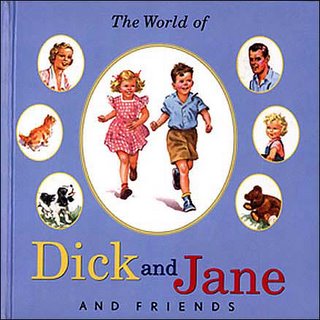 Sweet M. is in her third year at a school for LD kids . . . a school that has the reputation for being "the Harvard of LD schools" . . . We were thrilled when she was offered a spot, but last year was really tough for her there (more on that in a future post) and when we had her triennial neuro-psych evaluation done this past summer it was clear that she has been losing ground academically, and in other ways as well.
Sweet M. is in her third year at a school for LD kids . . . a school that has the reputation for being "the Harvard of LD schools" . . . We were thrilled when she was offered a spot, but last year was really tough for her there (more on that in a future post) and when we had her triennial neuro-psych evaluation done this past summer it was clear that she has been losing ground academically, and in other ways as well.The most difficult thing is that despite the fact that she has an astonishing visual memory—and almost no verbal memory unless the words are learned as rote phrases—her school was using the Wilson Fundamentals reading program with her for two years. I think Wilson was simply too auditory-acoustic-phonetic based for her. She was really struggling every single night doing her homework. But like the trooper she is, she'd do it, no matter how hard it was for her.
After I read the neuropsych, I consulted with educational specialist Susan S. to get her advice on how I could help sweet M. learn how to read.
Susan told me to start a sight word program immediately (that was mid-October), so that's what we've been doing. I downloaded a set of Dolch cards. I got mine from Mrs. Perkins classroom, a retired first grade teacher's website, but these lists and cards are easy to find with a Google search.
We've been working through the Dolch list of sight words. We're almost done with pre-primer and primer. Now, just six weeks later, M. is reading the old Dick and Jane books from my childhood. And also, some Dr. Seuss books, such as The Foot Book. And, amazingly, she's now asking me to read aloud to her!! This would never have happened two months ago.
Thank you, Susan S. Thank you, thank you, thank you.
Her teachers have also shifted their approach this year. Now they're using an old system called the Schwann (sp?) program, which is visually based.
So this two pronged approach seems to be working, but I want to learn more about visual phonics . . .
3 comments:
Way to go M.!
I am impressed with such great progress, that's incredible. I was finally diagnosed with CAPD (at age 41) so I understand what a struggle it can be.
Thank you for the link to my blog. I look forward to keeping up with sweet M.'s progress and the techniques that you are using.
I like the Dolch cards, I think that I'll use those for Griffin. I'll be visiting regularly, welcome to our blogging family!
Lora :)
Dear Lora,
Thanks so much for your comment! I'm thrilled to have found this set of blogs--and yours in particular . . . Your holiday letter is fantastic . . . I will probably write a post about it shortly . . . and link to it . . . It's an invaluable resource . . .
As for M's reading, I'm amazed too. I was beginning to think it was hopeless, but it seems as though everytime I get to that spot, I just have to learn more about her world . . .
Liz here from I Speak of Dreams.
My daughter's issue is only dyslexia. Boy the more I learn about LDs the more humble I become.
My daughter had several years of Slingerland, which kept her moving forward but still behind grade level in reading, even though her spoken (receptive + expressive) vocabulary was 7+ years above grade level.
Finally between 4th and 5th grade she did an intensive Lindamood-Bell program--finally above grade level in reading! The LiPs program, in addition to the phonics/phonemic awareness, stressed mastering sight words. This may be an approach that would be helpful for your daughter.
She still has issues, but the other part of the L-B program is that she realized her significant strengths, among them an impressive visual memory.
The other thing that has helped her tremendously is signing up for Recordings for the Blind and Dyslexic. She reads and listens simultaneously to most of her high-school textbooks.
Other kids really like the Kurzweil reader (Kurzweil 3000--link is for the Mac version)--it will get you to the website, anyway.
The key thing I've learned is to get concepts into the learner's brain SOMEHOW and then help them organize the concepts. There's no right way or wrong way, there are just ways that are more or less efficient for the individual learner.
Post a Comment